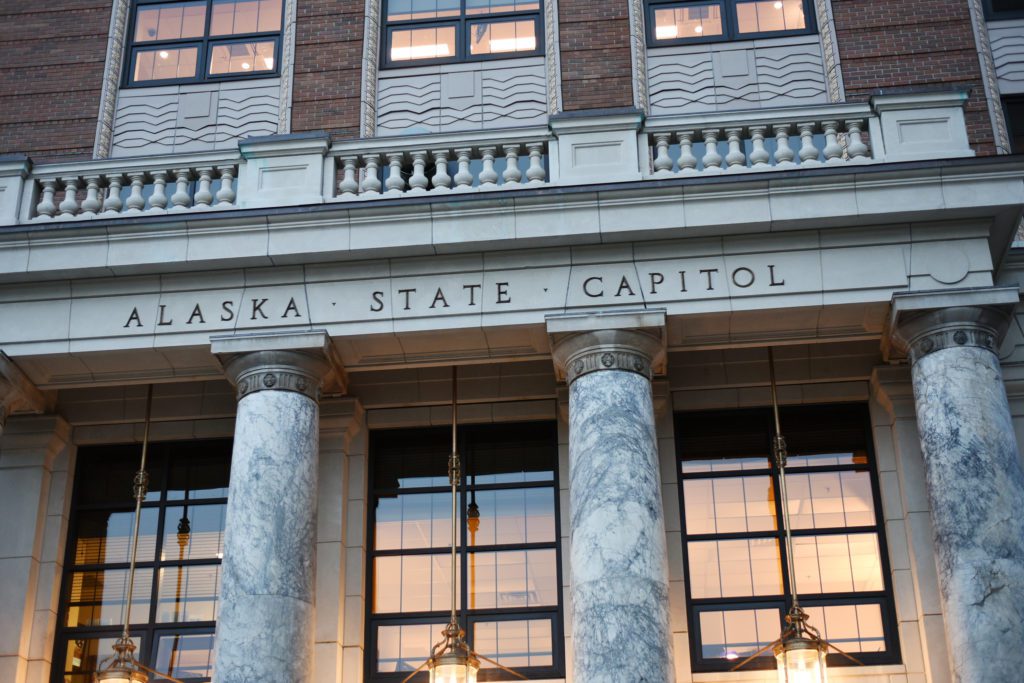
Alaska’s House of Representatives passed an operating budget on Monday, May 10, that funds essential services, with 18 months of forward funding for the Alaska Marine Highway System, but no mention of the Permanent Fund Dividend check amount.
Still, said Speaker of the House Louise Stutes, R-Kodiak, “every Alaskan can find something to like about this budget.”
House Bill 69 also calls for $4.2 billion in unrestricted general fund spending through a funding format boosted by one-time federal pandemic relief funds.
HB 69 now heads to the Senate for consideration. Budget details are to be finalized through negotiations with Gov. Mike Dunleavy and the Senate. Without a 10-day extension, the Legislature must complete its work by May 19.
“The governor’s proposals are largely intact,” said Stutes, in a statement released by the House Coalition. “We worked with the minority to amend the budget on the priorities we could agree on. And most of all, the state of Alaska is now on a path to provide funding for services that make our communities whole, such as the ferry system in coastal Alaska.”
“The budget is a reflection of our values, and it takes important steps to protect essential services and to provide stability as we recover from the COVID-19 pandemic,” said Rep. Neal Foster, D-Nome. “Our limited resources combined with relief funding from the federal government will help advance and protect important public services, like education and public safety, that Alaskans depend on every day.”
Rep. Kelly Merrick, R-Eagle River, called the work of the House “a fiscally conservative budget that protects Alaska’s savings and low-tax fiscal climate for businesses and individuals.”
“We’ve significantly pared down the budget in recent years while continuing to provide essential services to Alaskans without implementing new taxes,” she said.
Legislative sources said the Senate may want to add PFD details into the budget bill or choose to include them in a separate measure.
Key points of HB 69 include:
- One-time federal pandemic emergency funds available through the American Rescue Plan Act for community relief ($124.5 million) to help avoid local tax hikes, for tourism relief to help summer businesses survive ($30 million), to offset lost small business revenue ($30 million) and to offset lost nonprofit revenue ($30 million).
- Pre-K programs would get $5 million and K-12 schools are funded ahead through House Bill 169, which passed earlier this year to prevent pink slips to teachers and provide certainty of adequate school funding to students, parents and teachers.
- Communities that had issued bonds to build schools, and who were promised partial reimbursement from the state, will receive those funds. The Regional Educational Attendance Area was also fully funded.
- The University of Alaska was funded to the amount agreed on in a compact reached by the Dunleavy administration and university leaders.
- Grant funds are provided for an ice road on the Kuskokwim River, protecting infrastructure essential to commerce, public health and state services.
- The state will fulfill its obligation to the tax credit program that provided small companies to increase production of the state’s oil and gas.
- $695,000 requested by Dunleavy to ensure that the state will have the resources to protect the state’s sovereignty and ability to make decisions about development natural resources.
- Full funding for the Tribal Child Welfare Compact.
- Seven more public defender positions, to bolster the state’s public safety division.
- Also funded were Power Cost Equalization, scholarships provided through the Higher Education Fund, alcohol safety and chronic disease prevention programs, substance abuse grants, domestic violence and sexual assault prevention programs and oil spill prevention and response





